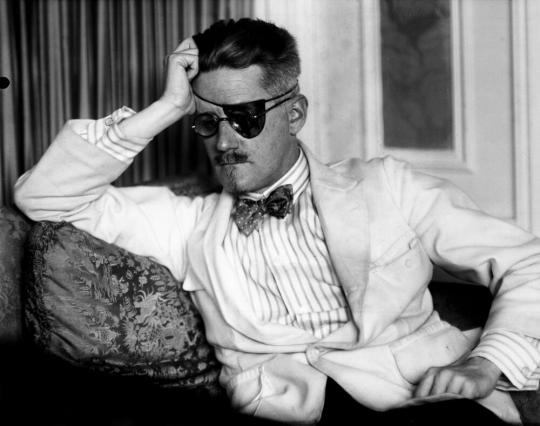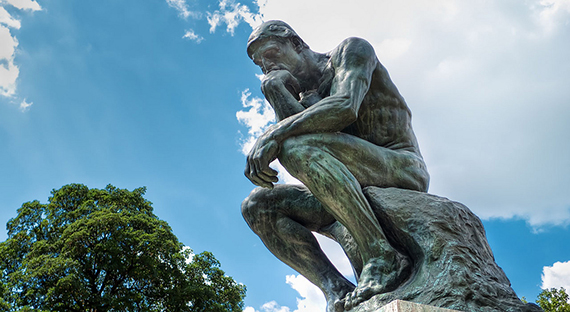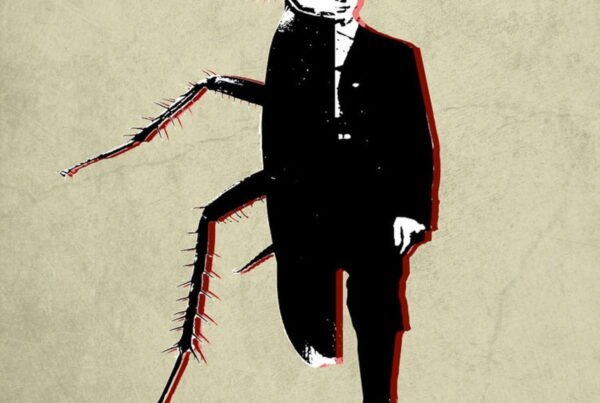James Joyce and Irish Nationalism
Over the course of this essay, I’ll be analyzing James Joyce’s Irish nationalism and how he
separated himself from the Celtic literary revivalist movement which was a pressing literary
propaganda culture in the late 19th and early 20th centuries. I’ll be studying Joyce’s work in his
short story collection ‘the Dubliners’ in particular ‘The Dead’ and ‘The Sisters’ in relation to
Joyce’s ‘A Portrait of a Young Man as an Artist’. I’ll be arguing Joyce’s lack of Irish identity, which
is shown throughout Joyce’s use of narrative, symbolism, and use of character development
which challenged Irish nationalism. I’ll also be discussing how it differentiates him from
prominent Irish authors Yeats, O’Casey, and Synge on grounds of Irish nationalism, English
colonialism, and the Celtic literary revivalists as a literary protest. Whilst authors such as Yeats
protested English colonization through literary means, Joyce analyzed this conflict and, in his
literature, separated himself from this nationalist culture which encompassed early modern
Ireland. Through Joyce’s use of his stream of consciousness narrative structure and his unique
character development he became one of the most prominent authors of the 20th century,
whilst separating himself from the deeply nationalistic Celtic Literary revivalist movements.
James Joyce’s ‘The Dead’ and ‘The Sisters’ can be read as a prelude to ‘A Portrait of the Artist as
a Young Man’, they all share similar narrative structure, symbolism, and contributions to the
conflict of the Irish identity. It is arguable that James Joyce is one of the most prolific authors of
the 20th century, his influence on narrative structure, his controversial stance on Catholicism,
Irish nationalism and English colonization is to be questioned as it challenges authors such as
Yeats and the traditional Celtic Literary revivalism which was at pressing nationalist movement
during the late 19th century through to the early 20th century.
Joyce separated himself from such Irish authors as he “did not believe in resuscitating outdated
traditions” (Nolan, Emer) such as Yeats, O’Casey and Synge who were promoting Irish
nationalism through literature. This allowed Joyce to truly explore Irish nationalism and religion
through his innovative “stream of consciousness” narrative. The contrary authors all developed
their style through a strict Irish nationalist approach, promoting Catholicism, Irish mythology,
folklore and ultimately conflict against English colonization. Joyce’s short stories ‘The Dead’ and
‘The Sisters’ explore these methods Joyce founded, and in conjunction with Joyce’s ‘A Portrait of
a young man as an artist’ we can see a totally separate method of explaining contemporary
Ireland.
Joyce’s apparent indifference to Ireland and the Irish Celtic literary revivalists, allowed him to
explore all religious and political dynamics which were present during the early 20th century as
“art for Joyce, should be autonomous, above the realm of propaganda and politics” (Nolan,
Emer). Joyce explores this ideology through his narrative of characters, his characters in the
Dubliner’s often were conflicting on Irish nationalism, characters such as ‘Aunt Dante’ and ‘Mr.
John Casey’ in ‘A Portrait of the Artist as a Young Man’ who express the conflict of Irish politics, a
fierce Irish nationalist in relation to a more liberal manner, accepting of the British.
We can acknowledge Joyce’s consistency of challenging Irish nationalism and religion through his
work. The short story ‘The Dead’ explores narrator Gabriel’s encounters with guests over dinner.
The story centers around the narrator Gabriel, the story shares its initial sense of Irish
nationalism once it is told that Gabriel works for the British journalism company the ‘Daily
Express’, in true Irish fashion the collaboration between the Irish and the English is
fundamentally culturally prohibited. The Irish nationalist argument is observed when guest Mrs.
Ivor’s shares her dedication to Irish nationalism and begins a debate with Gabriel. This conflict
would later be shown in other short stories in the ‘Dubliners’ but will be expanded on in ‘A
Portrait of the Artist as a Young Man’. This short story shares Gabriel’s deep hatred of Ireland as
he states, “I’m sick of my country, sick of it” (The Dead, pg.297), and alike Stephen in A Portrait,
he intends to escape. Another statement made by Gabriel shares Joyce’s opinion on literature as
“literature was above politics” (The Dead).
‘The Sisters’ alike the dead shares Joyce’s deep opinions and concerns, but through the narrative
of a child witnessing Father Flynn’s death, a deep friend. This short story focuses more on
religion than ‘The Dead’ and elaborates on Joyce’s religious belief, where Catholicism was a
foundation of Irish culture. ‘The Sisters’ separates from ‘The Dead’ which is a very abrupt, direct
event of countering Irish nationalism. ‘The Sisters’ portrays Joyce’s opinion on religion through
metaphors and similes. A constant mention of a chalice it’s relation to Father Flynn’s death is a
metaphor of the death of Ireland. This narration through a child’s eyes, a narration through
something pure and innocent reoccurs in ‘A Portrait of an Artist as a Young Man’.
Both ‘The Sisters’ and ‘The Dead’ used Joyce’s innovative “stream of consciousness” form of
narration, a type of narration of Joyce’s invention. This form of narration, especially when shown
through a child’s eyes allows the reader to witness the story through a pure lens, yet still
objective enough to create opinion. The constant conflict and struggle of Joyce’s work over Irish
nationalism and the apparent confusion towards the English and his faith is ever present
throughout the ‘Dubliners’ and his most prominent work ‘A Portrait of an Artist as a Young Man’
is a culmination of these short stories, a form of literature which encompasses the liberal
outlook to the incoming Irish revolution, a revolution which is still impacting Ireland nearly a
century later, further reinstating itself as it still stays prevalent to modern day Ireland.
As I’ve stated above, James Joyce’s ‘A Portrait of a Young Man as an Artist’ is a culmination on all
factors of his short stories ‘The Dead’ and ‘The Sisters’. In A Portrait, we witness the same
characterization, narrative, and metaphors. The story is told throughout the life of Stephan, an
Irish boy who has a troubled family and is sent to a boarding school Clongowes, whilst at school
Stephen witnesses’ multiple events which would shape him as a person. The characters in the
story are in relation to Joyce’s life, Stephen is an extension of Joyce whilst Stephens father Simon
is an extension of Joyce’s father and as a result his upbringing.
Through this characterization you can correlate this story to Joyce’s life. The story is about a
gradual loss of religious and nationalistic belief. The story starts with a very religious demeaner,
which would then shift throughout the story, following the spiritual journey of an aging boy. The
story itself as an extension of Joyce’s himself shows the timeline of Joyce’s loss in religious belief.
The narrator Stephen is initially religious whilst attending Clongowes college and would later
shift his spiritual belief as his family’s circumstance deteriorates, finally losing complete faith as
Stephen engages in sexual activities in the brothel district of Ireland. Although Stephen loses
touch with the Catholic religion, he would later attend a confession to save himself from eternal
hell, which is a symbol in the story. The symbol of hell is what creates the conflict in interest, he
had lost his faith in Ireland and Catholicism, yet is still superstitious and unnerved by the concept
of eternal hell and suffering.
Stephen’s religion is reinstated, but his Irish legacy and heritage is not. Stephen plans on
travelling out of Ireland to achieve his dreams as an artist. Stephen’s last name Dedalus, now
becomes a metaphor for the Greek story of Daedalus and Icarus, a mythological story about a
father and son escaping a prison. Ireland was Stephen’s prison, he wanted to leave but to do this
he would have to shed his Irish nationalism, yet Stephen takes this jump and leaves Ireland to
“forge in the smithy of my soul the uncreated conscious of my race”.
We can now see James Joyce’s opinions on early 20th century Ireland, he completely diverts
himself away from the traditional Celtic Literary Revivalists who were prevalent throughout the
1870’s – 1920’s. He distinguishes himself from this literary movement through his use of
metaphors which are often Irish based yet takes a completely different outlook on contemporary
Ireland. Whilst Yeats, Synge and O’Casey explored their Irish nationalism thoroughly and very
strictly stuck to the literary nationalist movement, using Irish folklore, mythology and customs,
Joyce explores his conflict with this regime. ‘The Sisters’ and ‘The Dead’ explore these virtues
and through his piece ‘A Portrait of an Artist as a Young Man’ he solidifies his nationalism, or lack
of.
He challenges Irish deep catholic roots and argues against it, taking a liberal stance and instead
of arguing against the English colonization, he explores it’s benefits and its doubts, ultimately
stating on multiple occasions that he questions whether even himself would live in Ireland.
Joyce’s literature often explores these conflicts through his stream of consciousness narrative
technique, and often using this technique through the eyes of a child, the pure, innocent,
unbiased, and forgiving nature of a child. Whilst throughout the story developing the strong
opinion, he had on the Irish revolution conflict. ‘The Sisters’ explores this through a child’s eyes,
eager to listen to the arguments between adults, whilst ‘The Dead’ explores this conflict through
the eyes of an adult who is already undergoing what is seen as a traitor’s job to the Irish legacy.
‘A Portrait of a Young Man as an Artist’ consolidates the two narrations in ‘The Sisters’ and ‘The
Dead’ by exploring the world through a growing child, showing the process of childhood to
adulthood and the realizations of Stephen and the world he is surrounded in. The consistency
between the short stories doesn’t end there, often with his finishing lines, the narrators, the
main characters are often undergoing a deep trivial period and shift their faith away from
Ireland, away from Catholicism, and away from Irish nationalism.
The short stories are a prelude, to ‘A Portrait of a Young Man as an Artist’ all sharing similar
themes and concepts, expressing Joyce’s experience has been an Irish citizen during the turmoil
he was surrounded in. His liberal outlook is accepting of the English culture and almost
dismissive of Irish culture towards the end of the stories. The stories, within the ‘Dubliners’ are
an extension of Joyce’s life, shown through a child’s eyes, a completely unbiased opinion of a
child going through conflict. The vast use of metaphors, similes and motifs further show Joyce’s
inner experience as a man growing up in early 20th century Ireland.
References
Spinks, Lee, 2009, James Joyce: A Critical Guide, Edinburgh, Edinburgh University press.
Joyce, James, 2008, A Portrait of an Artist as a Young Man, edited with introduction by Jeri Johnson,
Oxford UK, Oxford University Press
Begam, R., & Moses, M. V. (2008). Modernism and colonialism : british and irish literature, 1899-
1939 (Ser. E-duke books scholarly collection). Duke University Press
Cairns, D., & Richards, S. (1988). Writing Ireland: colonialism, nationalism, and culture. Manchester
University Press.
Nolan, Emer. James Joyce and nationalism. Routledge, 2002.
Joyce, J 1969, ‘The sisters’, in Dubliners, Modern Library, New York.
Frank O’Connor 1985, Classic Irish Short Stories, Oxford and New York: Oxford University Press



